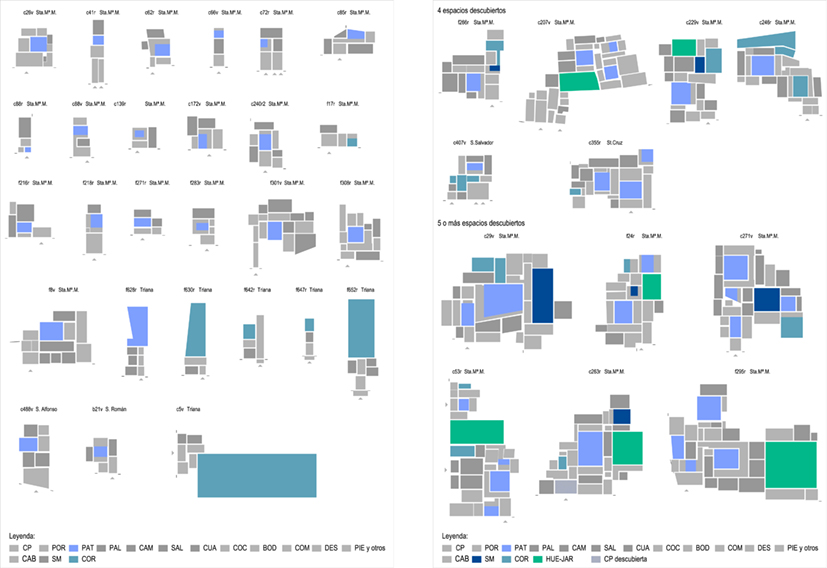
From Words to Drawing: Domestic Architecture Classifications in 16th-Century Seville
Abstract
Seville experienced great splendour during the 16th Century as the European centre for trade with the Americas. At that time, religious institutions and charitable hospitals gathered significant real-estate heritage. To facilitate its management, literary documents called apeos were drawn up, which exhaustively and reliably described the main architectural features of the buildings, including their general measurements. In this research, approximately 1,700 of these apeos, conserved in various archives of Seville, are studied.
A new methodology of architectural graphic analysis has been followed in order to understand the organisation of spaces in 16th–Century Sevillian domestic life: historical texts have been turned into drawings. In addition, information on the architectural elements described has been compiled using databases. To draw the plans, it was necessary to locate the current lot of each property. In certain cases, schematic elevations and volumes have also been drawn.
By taking into account the uses and areas, a typological classification into four groups has been made: houses, courtyard tenement housing, inns, and shops. Their main architectural characteristics have been identified through the application of comparative graphic diagrams.
Finally, all the information has been superimposed over street plans of the city after considering its urban evolution. In this way, different items of data have been spatially related and a global vision of the transformations and permanence over time is provided. The investigation remains open since many apeos from the 16th and 17th Centuries have yet to be studied, plus several buildings that are still standing today.
DOI: https://doi.org/10.20365/disegnarecon.26.2021.4
Keywords
Full Text:
PDFRefbacks
- There are currently no refbacks.
Copyright (c) 2021 María Núñez-González, Antonio Gámiz-Gordo
DISEGNARECON
ISSN 1828 5961
Registration at L'Aquila Law Court no 3/15 on 29th June, 2015.
Indexed in SCOPUS. Diamond Open Access. All papers are subjected to double blind peer review process by qualified reviewers.
Journal founded by Roberto Mingucci
